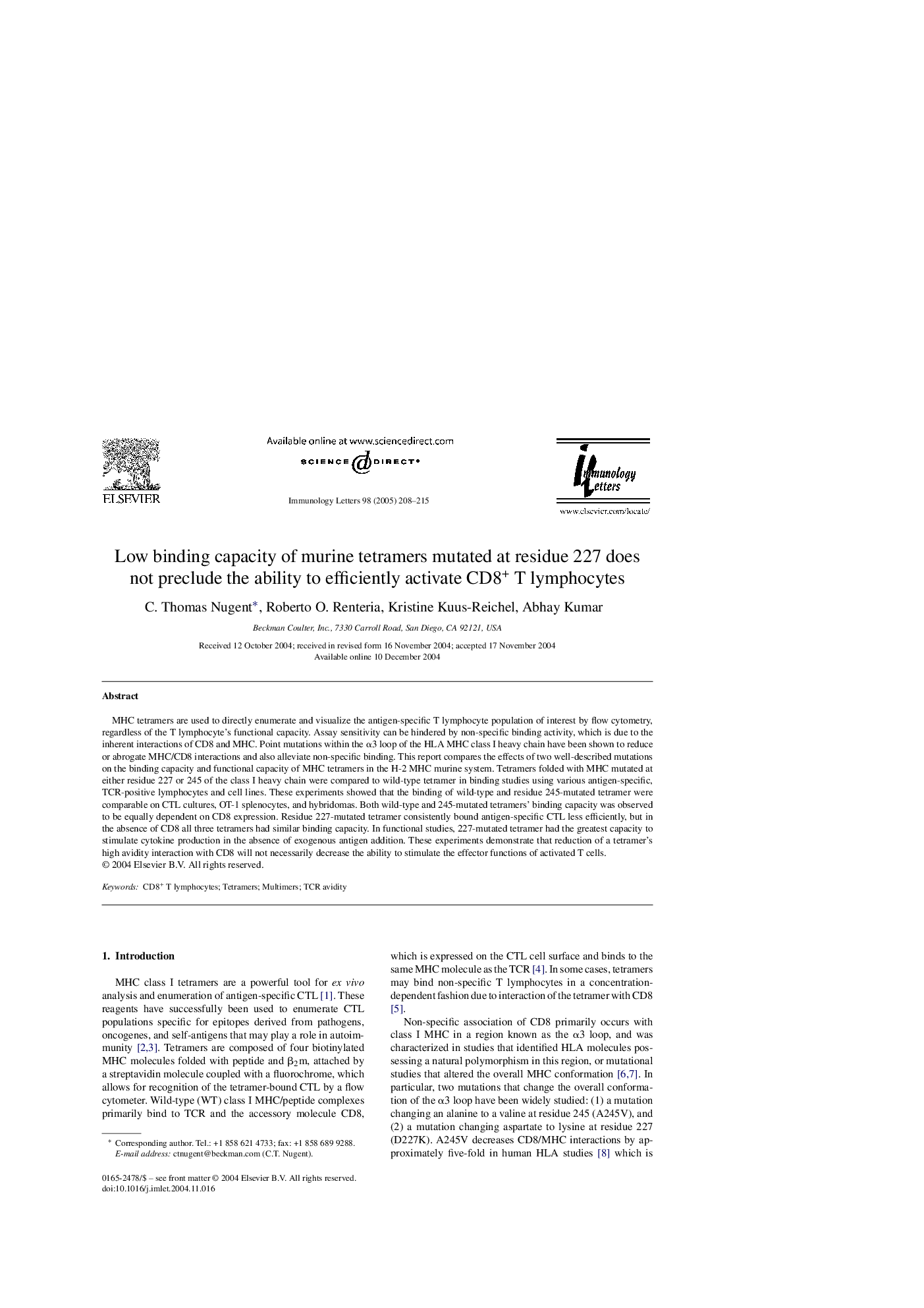| Article ID | Journal | Published Year | Pages | File Type |
|---|---|---|---|---|
| 9266229 | Immunology Letters | 2005 | 8 Pages |
Abstract
MHC tetramers are used to directly enumerate and visualize the antigen-specific T lymphocyte population of interest by flow cytometry, regardless of the T lymphocyte's functional capacity. Assay sensitivity can be hindered by non-specific binding activity, which is due to the inherent interactions of CD8 and MHC. Point mutations within the α3 loop of the HLA MHC class I heavy chain have been shown to reduce or abrogate MHC/CD8 interactions and also alleviate non-specific binding. This report compares the effects of two well-described mutations on the binding capacity and functional capacity of MHC tetramers in the H-2 MHC murine system. Tetramers folded with MHC mutated at either residue 227 or 245 of the class I heavy chain were compared to wild-type tetramer in binding studies using various antigen-specific, TCR-positive lymphocytes and cell lines. These experiments showed that the binding of wild-type and residue 245-mutated tetramer were comparable on CTL cultures, OT-1 splenocytes, and hybridomas. Both wild-type and 245-mutated tetramers' binding capacity was observed to be equally dependent on CD8 expression. Residue 227-mutated tetramer consistently bound antigen-specific CTL less efficiently, but in the absence of CD8 all three tetramers had similar binding capacity. In functional studies, 227-mutated tetramer had the greatest capacity to stimulate cytokine production in the absence of exogenous antigen addition. These experiments demonstrate that reduction of a tetramer's high avidity interaction with CD8 will not necessarily decrease the ability to stimulate the effector functions of activated T cells.
Related Topics
Life Sciences
Immunology and Microbiology
Immunology
Authors
C. Thomas Nugent, Roberto O. Renteria, Kristine Kuus-Reichel, Abhay Kumar,
